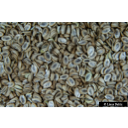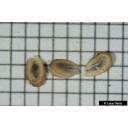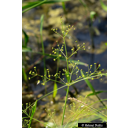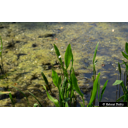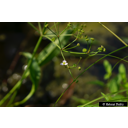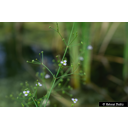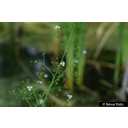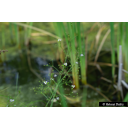Wissenswertes zum Taxon (Art, Unterart, Varietät...)
Alisma plantago-aquatica L. 1753
Alismataceae
- Froschlöffelgewächse (APG IV)Gewöhnlicher Froschlöffel
Taxonkonzept: Schmeil-Fitschen 2019
Verbreitung: Europa, Türkei, Levante, Kaukasus, Iran, West-Sibirien, Afghanistan, Pakistan, Kosmopolit
Verbreitungskarte Bundesamt für Naturschutz BfN
Blütezeit: VII - VIII
Alisma plantago-aquatica L. subsp. plantago-aquatica - Accepted: Alisma plantago-aquatica L. subsp. plantago-aquatica bei Zander 2008; Familie: Alismataceae (Zander 2008)Alisma plantago-aquatica L. subsp. plantago-aquatica - Accepted: Alisma plantago-aquatica L. subsp. plantago-aquatica bei The Plant List (2010); Familie: Alismataceae (APG III)Alisma plantago-aquatica L. subsp. plantago-aquatica - Accepted: Alisma plantago-aquatica L. bei The Plant List (2014), version 1.1; Familie: Alismataceae (APG III)Alisma plantago-aquatica L. - Accepted: Alisma plantago-aquatica L. bei The Plant List (2014), version 1.1; Familie: Alismataceae (APG III)Alisma plantago-aquatica L. - Accepted: Alisma plantago-aquatica L. bei The Plant List (2014), version 1.1; Familie: Alismataceae (APG IV)Alisma plantago-aquatica L. - Accepted: Alisma plantago-aquatica L. bei Plants of the World Online; Familie: Alismataceae (APG IV)Alisma plantago-aquatica L. - Accepted: Alisma plantago-aquatica L. bei Rothmaler 2011; Familie: Alismataceae (APG IV)
- Unterschiede zu verwandten Arten
- blüht nachmittags
- Blüten
- Pollen.Scheibenblumen, Staubblätter mit basalem Nektargewebe, durch Schwebfliegen bestäubt
- Blütenökologie
- Pollen-Scheibenblumen
- Lebensform
- krautig, aquatisch
- Blätter
- Heterophyllie, unterste Bläter schmal, unter Wasser lang flutend; obere Blätter breitlanzettlich, frisch giftig
- Früchte
- scheibenförmige Spaltfrüchte, in Teilfrüchte mit Schwimmgewebe zerfallend, Schwimmverbreitung, Schwimddauer über 15 Monate, auch Wasserhaftungsverbreitung durch Wasservögel
- Bodenbedingungen
- nährstoffreich
- Wurzeltypus
- Rhizom: knolliges Speicherorgan
- Natürliches Vorkommen (Habitat)
- an Gewässerufern, in Verlandungsgesellschaften
- Verwendung
- Stärkereiche Rhizome in der Westmongolei gekocht gegessen
Erhardt, W., Götz, E., Bödeker, N. & Seybold, S. (2008): Der große Zander. Enzyklopädie der Pflanzennamen. Band 2. Arten und Sorten. Eugen Ulmer KG, Stuttgart (Hohenheim), 18. Aufl., 2103 S.; Kew Gardens and Collaborators (2017): Plants of the World Online. see: plantsoftheworldonline.org.; The International Plant Names Index (2009). Published on the Internet http://www.ipni.org; Courtesy to IPNI, 2009. Exported from IPNI at date: 2009-09-22 20:17:51;
Diese Webseite verwendet Google Maps, um Karten und Standorte von Pflanzen in den Hohenheimer Gärten anzuzeigen. Dadurch werden unter Umständen Daten an Google weitergeleitet, was mit einer Verarbeitung Ihrer personenbezogenen Daten verbunden sein kann. Die Datenschutzerklärung von Google finden Sie hier: Datenschutzerklärung von Google
| Fundort | Datum (ISO) | Sammler oder Beobachter | Lat. | Long. | Projekt |
|---|---|---|---|---|---|
| Hohenheimer Gärten – Schlosspark | 2021-05-27 | Nathalie Hund | 48,71055 | 9,21381 | Bachelorarbeit |
| Hohenheimer Gärten - Teich Plieninger Aussicht | 2021-07-20 | Helmut Dalitz | 48,71048611111 | 9,213977777778 | sporadische Erhebung |
| Hohenheimer Gärten - Teich Plieninger Aussicht | 2021-07-20 | Helmut Dalitz | 48,71048611111 | 9,213977777778 | sporadische Erhebung |
| Hohenheimer Gärten - Teich Plieninger Aussicht | 2021-07-20 | Helmut Dalitz | 48,71048611111 | 9,213977777778 | sporadische Erhebung |
| Hohenheimer Gärten - Teich Plieninger Aussicht | 2021-07-20 | Helmut Dalitz | 48,71048611111 | 9,213977777778 | sporadische Erhebung |
| Hohenheimer Gärten - Teich Plieninger Aussicht | 2021-07-20 | Helmut Dalitz | 48,71048611111 | 9,213977777778 | sporadische Erhebung |
| Hohenheimer Gärten - Teich Plieninger Aussicht | 2021-07-20 | Helmut Dalitz | 48,71048611111 | 9,213977777778 | sporadische Erhebung |

